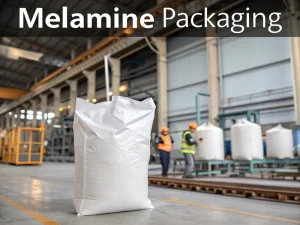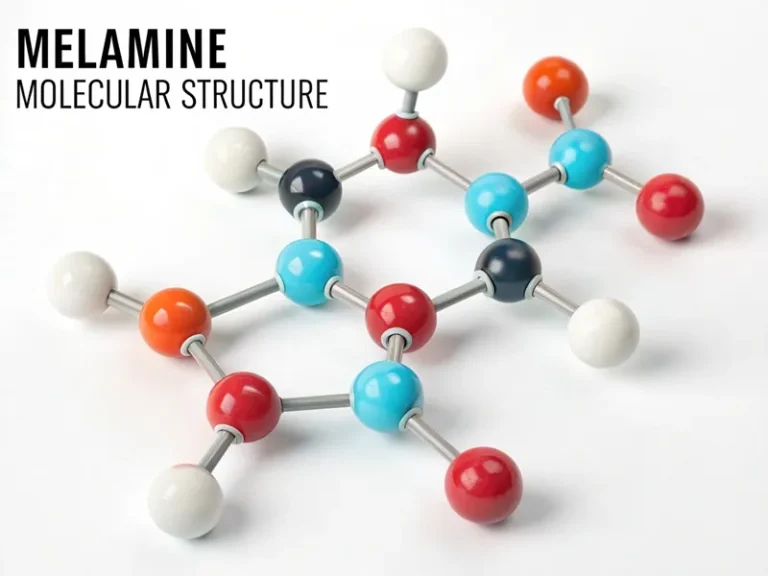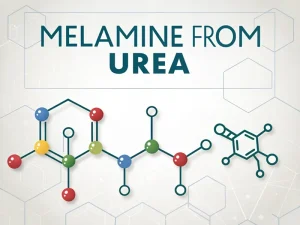
Melamine Packaging
Tech Blog Melamine packaging For manufacturers, inaccurate packaging not only fails to meet national standards but also increases labor costs and the risk of product


Melamine is an organic chemical raw material rich in nitrogen. It has attracted widespread attention due to its unique molecular structure and wide applications in industries such as plastics, adhesives, and coatings. Understanding the melamine molecular structure is crucial for understanding its characteristics and applications.
Melamine formula is C₃H₆N₆, which contains a triazine ring nucleus with three amino groups (-NH) attached.
Melamine core structure is an s-triazine ring, which is a six-membered ring composed of three carbon atoms and three nitrogen atoms arranged alternately. On this ring, each carbon atom is connected to an amino group (-NH₂). Therefore, the chemical name of melamine is often referred to as 2,4,6-triamino-1,3,5-triazine.
Triazine ring: a six-membered heterocyclic ring with alternating carbon and nitrogen atoms
Bonding: Each nitrogen is bonded to two carbons to form a planar aromatic structure.
Resonance stability: enhanced stability by delocalized π electrons, similar to benzene.
Amino substituent: 3-NH ₂ is a group attached to the triazine ring at positions 1, 3, and 5.
Electron-deficient triazine ring:
The electron-withdrawing property of the triazine ring makes it reactive with electrophilic reagents.
Hydrogen bond:
Amino groups form hydrogen bonds (N-H ···· N) in crystalline melamine, resulting in a high melting point (345 °C).
Melamine exhibits multiple crystal phases according to synthesis conditions:
Single clinical (alpha phase): the most stable form under standard conditions.
Hexagonal (β phase): formed under high-pressure or high-temperature conditions.
Self-assembly through hydrogen bonding
Melamine binds with cyanuric acid (C₃H₃N₃O₃) via complementary hydrogen bonds (N-H···O and N-H···N).
This interaction is notorious for causing kidney stones in the 2008 Chinese milk scandal.
Formaldehyde polymerization
The molecular structure characteristics of melamine determine its series of physical and chemical properties:
The molecular structure of melamine, especially its multiple amino groups and stability of triazine rings, makes it an important monomer for synthesizing polymer materials.
Melamine formaldehyde resin: This is the most important use of melamine. Melamine and formaldehyde undergo a condensation reaction under certain conditions, forming melamine formaldehyde resin (also known as melamine resin). This resin has excellent heat resistance, water resistance, chemical corrosion resistance, high hardness, good insulation performance, and glossiness.
Therefore, it is widely used in the manufacture of daily utensils (such as melamine tableware), decorative panels, coatings, molding powders, paper processing agents, and fabric finishing agents.
Flame retardant: Due to the high nitrogen content of melamine, it can release noncombustible nitrogen gas during thermal decomposition, dilute combustible gases, and absorb heat, thereby playing a flame retardant role.
Other applications: Melamine can also be used as a water reducing agent, formaldehyde cleaner, etc
Melamine molecular structure of -an amino-rich triazine ring-determines its industrial use and problematic characteristics. Although its stability and reactivity make it indispensable in manufacturing, the same features can also bring health and environmental risks. Understanding this dual nature is crucial for developing safer alternatives and responsibly regulating their use.
As research progresses, efforts to mitigate the drawbacks of melamine while maintaining its benefits will remain a key focus of chemical engineering and sustainable development.

Tech Blog Melamine packaging For manufacturers, inaccurate packaging not only fails to meet national standards but also increases labor costs and the risk of product

Tech Blog How to Detect Melamine in Textiles? Melamine powder, a nitrogen-containing heterocyclic compound, is widely used in flame-retardant textiles and plastic products due to

Tech Blog melamine from urea Melamine is well-known for its wide range of applications, but its raw material for production is surprisingly urea. For manufacturers,

JINGJIANG MELAMINE POWDER
© JINJIANG MELAMINE